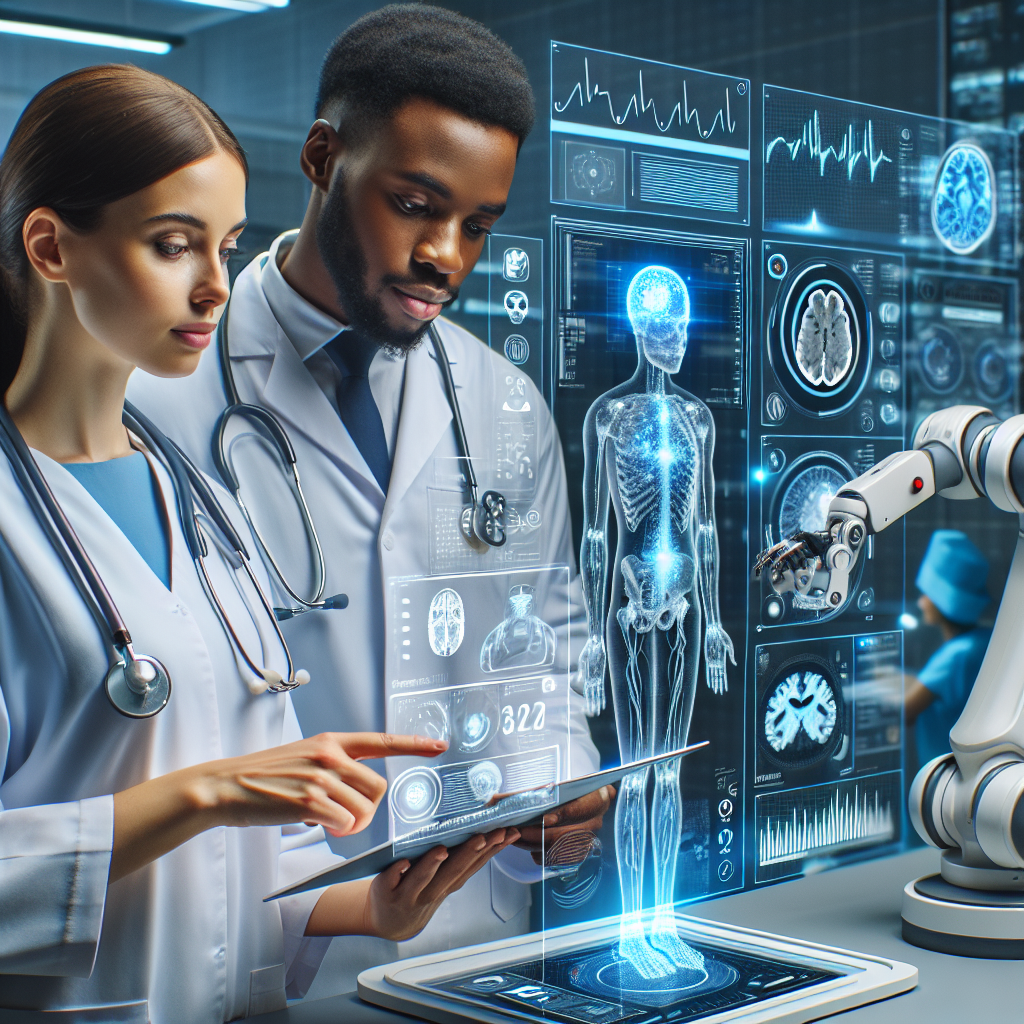Opinion | How Doctors Can Best Integrate A.I. Into Medical Care
The dawn of artificial intelligence (A.I.) in the healthcare sector has been both a promise and a challenge. In recent years, A.I. has shown immense potential to transform medical care, from diagnostics to treatment planning. However, the successful integration of A.I. into medical practice is not as simple as flipping a switch. It requires a thoughtful approach that considers the nuances of patient care and the existing healthcare infrastructure.
The Growing Role of A.I. in Medicine
A.I. technologies, such as machine learning algorithms and natural language processing, have made significant strides in analyzing vast datasets to identify patterns and insights that human doctors may overlook. For instance, A.I. can analyze medical imaging with remarkable accuracy, helping radiologists detect conditions like tumors and fractures more effectively. In addition, predictive models can assess patient data to forecast potential health risks, enabling proactive care.
However, the benefits of A.I. in healthcare are contingent on its acceptance by medical professionals. Doctors must feel confident in the tools they use, understanding not just how they work, but also their limitations. Consequently, the question arises: how can A.I. be seamlessly integrated into medical practices without compromising patient care?
Building Trust in A.I. Technologies
The first step toward integrating A.I. in healthcare involves fostering trust between physicians and technology. This trust can be built through training and education. Medical professionals need comprehensive training that goes beyond mere usage. They must understand the underlying principles of A.I., including its advantages and limitations.
This training should also focus on critical thinking skills. Doctors should learn to interpret A.I. outputs judiciously, ensuring that they don’t blindly follow algorithms without considering the individual patient’s context. A.I. should be viewed as a tool that augments human capabilities, not as a replacement for human judgment.
Collaboration Between A.I. Developers and Healthcare Professionals
A collaborative approach between A.I. developers and healthcare providers is essential for creating effective A.I. applications. Developers must engage with doctors to understand their needs and challenges. This partnership can lead to the design of A.I. tools tailored to real-world medical scenarios, ensuring that they are practical and user-friendly.
Moreover, continuous feedback from healthcare providers can drive the iterative improvement of A.I. systems. When doctors share their experiences and insights regarding A.I. applications, developers can refine their algorithms, making them more efficient and effective in clinical settings.
Ensuring Data Quality and Ethics
The effectiveness of A.I. in healthcare is largely dependent on data quality. A.I. systems learn from historical data, and if that data is biased or incomplete, the outcomes can be misleading. Therefore, healthcare organizations must prioritize data integrity and ethical considerations in A.I. application development.
Moreover, A.I. systems must be designed to prioritize patient privacy. As healthcare increasingly relies on data-driven solutions, protecting sensitive patient information is paramount. Transparency in how A.I. systems utilize patient data can contribute to building public trust in these technologies.
The Role of Regulations and Guidelines
As A.I. becomes more prevalent in healthcare, regulatory frameworks must evolve to keep pace. Policymakers need to establish guidelines that ensure A.I. systems are safe, effective, and equitable. These regulations should address issues like data privacy, algorithmic bias, and accountability for A.I.-driven decisions.
Furthermore, regulatory bodies should work closely with healthcare professionals to ensure that the guidelines reflect the realities of clinical practice. The goal is to create a supportive environment that fosters innovation while safeguarding patient interests.
Emphasizing Human-Centric Care
While the benefits of A.I. in healthcare are substantial, it is crucial to maintain a human-centered approach to patient care. A.I. should enhance, not replace, the personal interactions that are a cornerstone of effective medical practice. Physicians must continue to engage with patients, listen to their concerns, and make decisions based on a holistic understanding of their needs.
A.I. can support this by providing timely and relevant information, allowing doctors to make informed decisions while still prioritizing the human connection. Tools that assist with clinical decision-making should be seen as extensions of the physician’s expertise, rather than as stand-alone solutions.
Case Studies of Successful Integration
Examining case studies of successful A.I. integration can offer valuable insights for healthcare organizations looking to adopt similar technologies. For instance, hospitals that have implemented A.I.-powered diagnostic tools report reduced wait times and improved patient outcomes. These successes often stem from a thoughtful approach to A.I. integration that includes clear communication, training, and collaboration.
For example, a leading hospital in the United States combined A.I. technology with human expertise to enhance its radiology department. By utilizing an A.I. system that flagged potential issues in medical images, radiologists could prioritize cases that needed immediate attention. This practice not only improved diagnostic accuracy but also allowed healthcare professionals to focus on complex cases that required their expertise.
Future Considerations for A.I. in Healthcare
As we look to the future, the potential for A.I. in healthcare continues to expand. Innovations are emerging that may further enhance patient care and streamline operations. From telemedicine solutions powered by A.I. to personalized treatment plans based on genetic data, the possibilities are boundless.
However, stakeholders must approach these advancements with caution. It is essential to strike a balance between technological innovation and the fundamental principles of medical ethics. As A.I. transforms the landscape of healthcare, ongoing dialogue among healthcare providers, technologists, and policymakers will be critical.
Conclusion
The integration of A.I. into medical care presents significant opportunities and challenges. To harness the full potential of A.I., healthcare professionals must prioritize education, collaboration, and ethical considerations. By working together, doctors and A.I. developers can create systems that enhance patient care, support clinical decision-making, and ultimately drive better health outcomes.
In this journey toward a more A.I.-driven healthcare system, the human touch must always remain at the forefront. By ensuring that technology complements the art of medicine, we can pave the way for a future where A.I. and healthcare professionals work hand in hand to provide the best possible care for patients.



